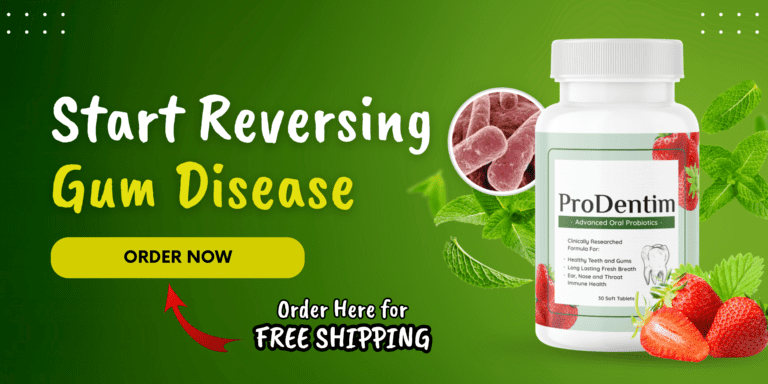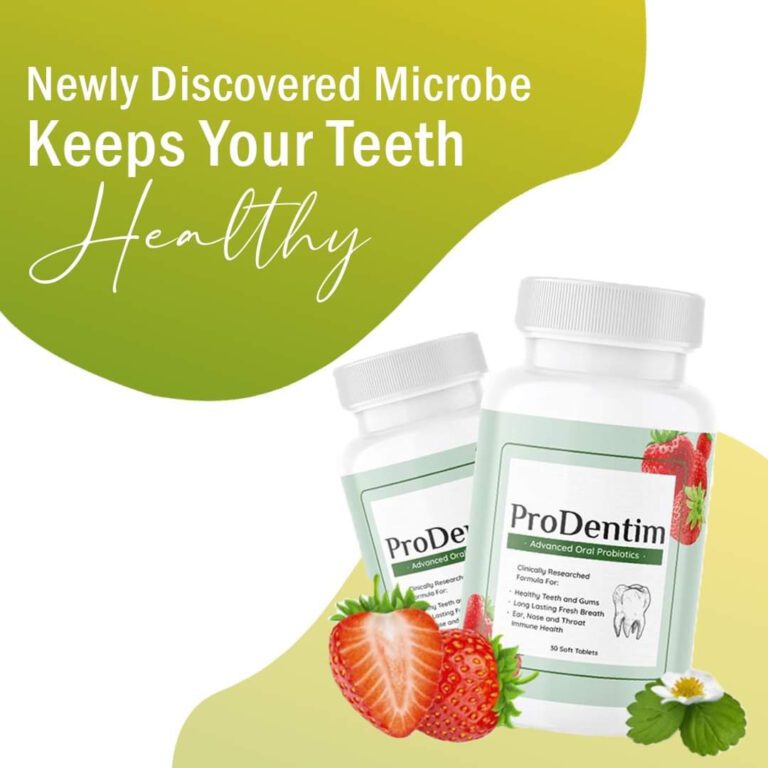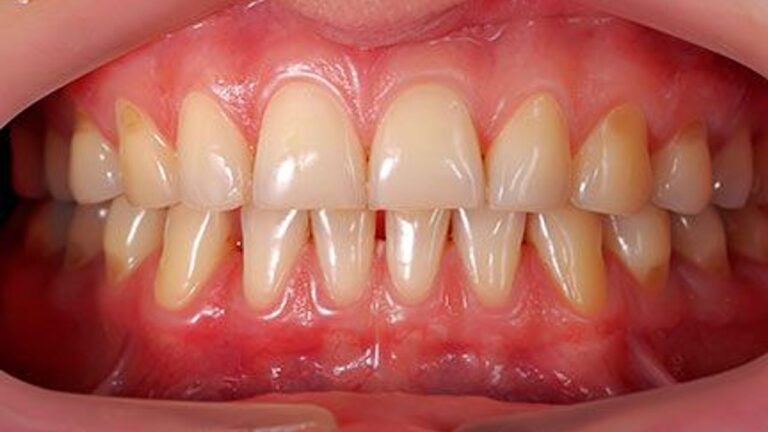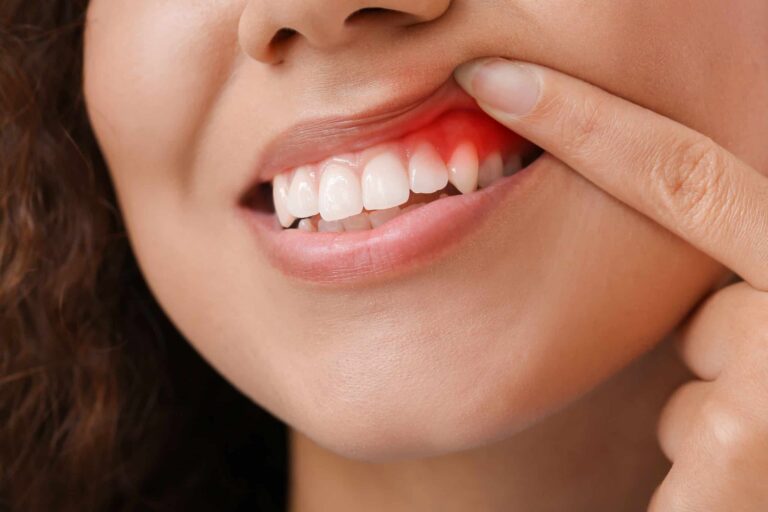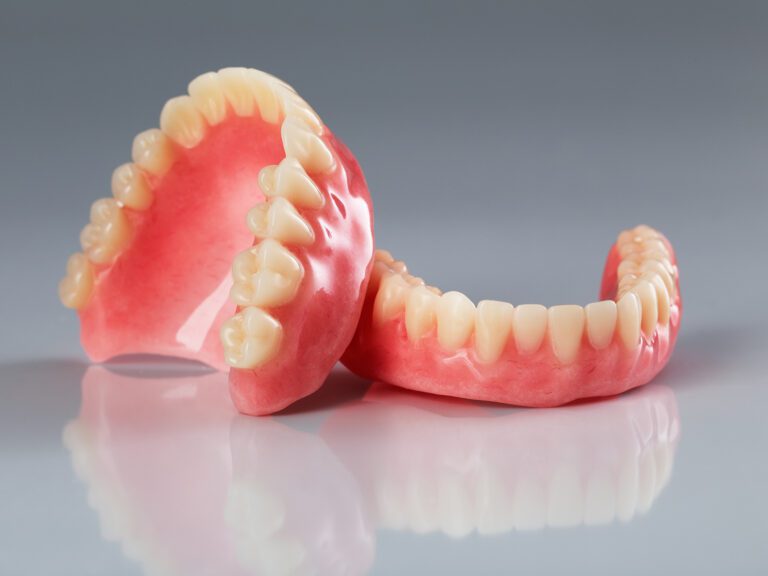Laser Treatment for Gum Disease: Pros and Cons
Gum disease, a prevalent condition affecting millions worldwide, can lead to serious oral health issues, including tooth loss and impacts on overall well-being. As dental technology advances, laser treatment emerges as a cutting-edge option for managing gum disease, offering a modern alternative to traditional surgical methods.
This innovative approach has garnered attention for its potential to provide a less invasive, more comfortable treatment experience for patients suffering from gum disease.
However, as with any medical treatment, it’s essential to weigh both the benefits and drawbacks to make an informed decision.
In this article, we’ll delve into the pros and cons of laser treatment for gum disease, providing you with the knowledge needed to navigate your treatment options effectively.
As we explore laser treatment’s advantages and limitations, we’ll also introduce ProDentim, a natural supplement designed to support oral health.
ProDentim offers a complementary approach to managing gum disease, enriching traditional and laser treatments with the power of probiotics and natural ingredients.
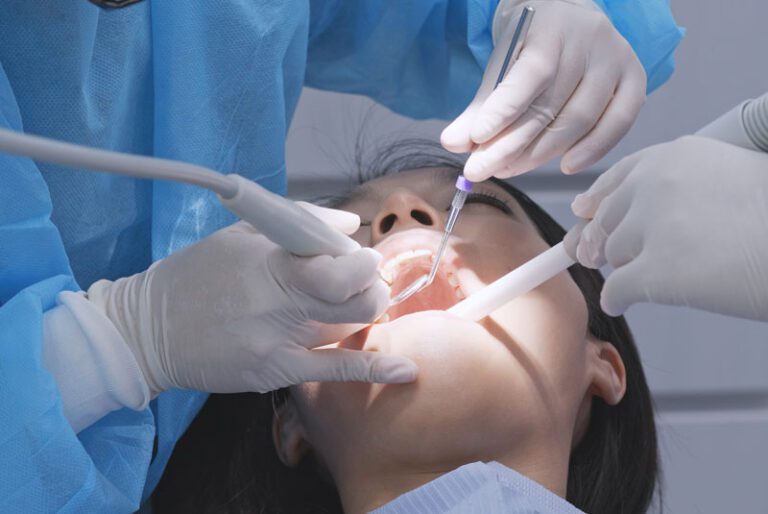
Understanding Gum Disease
Before delving into the specifics of laser treatment for gum disease, it’s essential to have a solid understanding of the condition itself.
Gum disease, known medically as periodontal disease, encompasses a range of inflammatory conditions.
Stages of Gum Disease
- Gingivitis: This initial stage is characterized by red, swollen gums that may bleed easily during brushing or flossing. Gingivitis is often the result of poor oral hygiene, which allows plaque—a sticky film of bacteria—to accumulate on the teeth and gum line. Fortunately, gingivitis can be reversed with diligent care and professional dental cleanings.
- Periodontitis: If gingivitis is left untreated, it can advance to periodontitis. In this stage, the inner layer of the gum and bone pull away from the teeth, forming pockets that can become infected. This can lead to the destruction of the supporting bone and connective tissue, eventually resulting in tooth loss.
Causes and Risk Factors
Gum disease is primarily caused by the buildup of plaque.
However, several other factors can increase your risk, including:
- Smoking or chewing tobacco
- Hormonal changes, such as those occurring during pregnancy or menopause
- Diseases that affect the immune system, like diabetes
- Certain medications that reduce saliva flow
- Genetic susceptibility
Understanding these risk factors is crucial for prevention and early intervention.
Regular dental check-ups, proper oral hygiene, and lifestyle adjustments can significantly reduce the risk of developing gum disease.
Traditional Treatments for Gum Disease
Traditionally, gum disease has been managed through deep cleaning procedures which remove plaque and tartar from below the gum line.
In more advanced cases, surgical interventions may be necessary to restore gum health.
While effective, these treatments can be invasive and uncomfortable, leading many to seek less invasive alternatives like laser treatment.
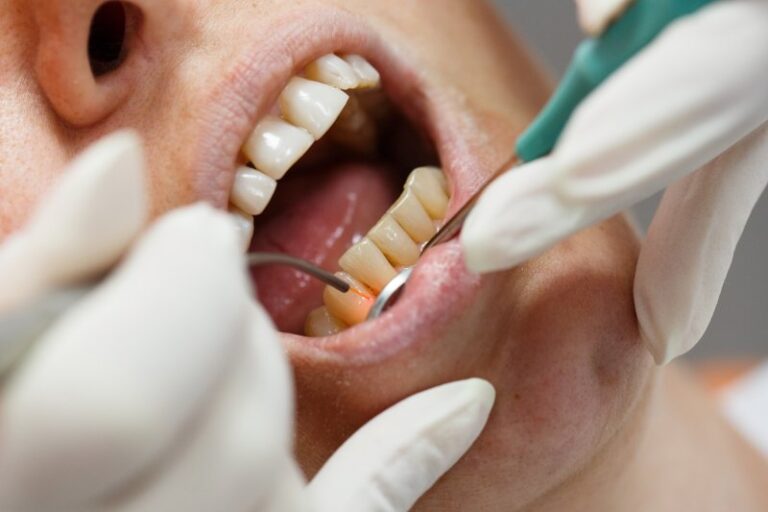
What is Laser Treatment for Gum Disease?
Laser treatment for gum disease represents a modern approach to managing this common dental problem, utilizing precise laser technology to target and treat the affected gum tissue without the need for traditional surgical methods.
This section will explore how laser treatment works and why it’s considered a beneficial option for many patients suffering from periodontal disease.
How Laser Treatment Works
Laser treatment involves the use of specific wavelengths of light to selectively remove or reshape gum tissue.
In the context of gum disease, the laser is used to eliminate infected tissue from the pockets between the gums and teeth, kill harmful bacteria, and stimulate the regeneration of healthy gum tissue.
Goals of Laser Gum Treatment
The primary objectives of laser treatment for gum disease include:
- Removing Infected Tissue: Lasers can precisely target diseased gum tissue, leaving healthy tissue intact.
- Reducing Gum Pockets: By removing infected tissue and promoting healing, laser treatment can help reduce the depth of the pockets that form between the gums and teeth in periodontitis.
- Stimulating Tissue Regeneration: Lasers not only remove infection but also encourage the growth of new, healthy gum tissue.
- Eliminating Bacteria: The heat from the laser kills bacteria within the gum pockets, reducing the risk of further infection and inflammation.
Benefits of Laser Treatment
Laser treatment offers several advantages over traditional surgical methods for treating gum disease, making it an attractive option for patients and dental professionals alike.
These benefits include:
- Minimally Invasive: Unlike traditional surgery, which may require cutting and sutures, laser treatment is less invasive, resulting in less discomfort and swelling post-procedure.
- Precision: Lasers provide unparalleled accuracy, targeting only the diseased tissue without harming the surrounding healthy gums.
- Reduced Recovery Time: The minimally invasive nature of laser treatment often leads to quicker recovery times compared to conventional surgery.
- Less Bleeding and Infection Risk: The laser cauterizes as it cuts, reducing bleeding during the procedure and lowering the risk of infection afterward.
While laser treatment for gum disease offers many promising benefits, it’s important to consider it within the broader context of oral health care.
Additionally, exploring supportive treatments, such as the use of ProDentim, can further enhance gum health and complement the effects of laser therapy.
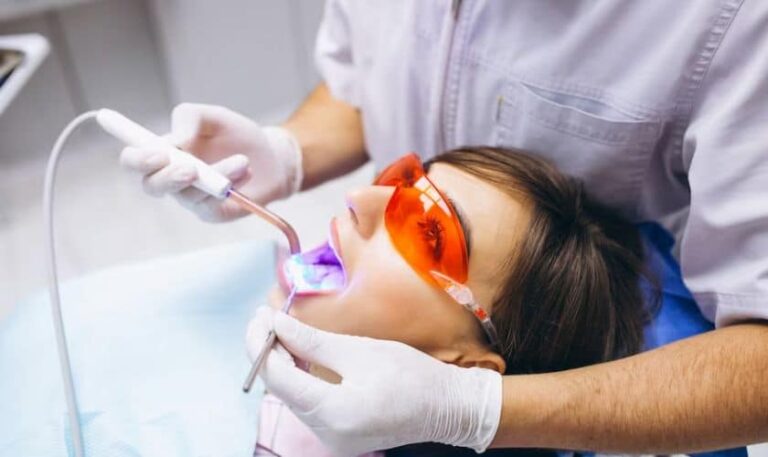
Pros of Laser Treatment for Gum Disease
Laser treatment has emerged as a highly effective option for managing gum disease, offering several advantages over traditional treatment methods.
Minimally Invasive Nature
One of the most significant benefits of laser treatment is its minimally invasive nature.
Unlike conventional surgery, which often requires incisions and sutures, laser therapy uses light energy to precisely target and treat the affected areas without the need for cutting.
Precision and Effectiveness
Lasers offer unparalleled precision in targeting diseased gum tissue, ensuring that only the affected areas are treated while healthy tissues remain unharmed.
Reduced Bleeding and Infection Risk
The cauterizing effect of the laser reduces bleeding during the procedure and minimizes the risk of infection afterward.
Shorter Recovery Time
Due to the less invasive nature of laser treatment, patients typically experience a shorter recovery time compared to those who undergo traditional gum surgery.
Cons of Laser Treatment for Gum Disease
While laser treatment offers numerous benefits, there are also considerations and limitations that patients should be aware of before choosing this option.
Cost Considerations
Laser treatment for gum disease can be more expensive than traditional treatments due to the specialized equipment and training required
Availability and Accessibility
Not all dental practices offer laser treatment for gum disease, as it requires specific technology and training. This limitation may make it more challenging for some patients to access this treatment option.
Need for Skilled Practitioners
The success of laser treatment significantly depends on the skill and experience of the practitioner.
Finding a dental professional who is specifically trained and experienced in laser dentistry is crucial for ensuring the best possible outcomes.
As we explore the pros and cons of laser treatment for gum disease, it’s clear that while this modern approach offers several advantages, it may not be the best fit for everyone.
Considering alternative or complementary treatments, such as ProDentim, can provide additional support for maintaining optimal gum health.
ProDentim’s unique formulation of probiotics and natural ingredients is designed to enhance oral health from within, offering a holistic approach to complementing gum disease treatment efforts.
The Importance of a Comprehensive Approach
When considering laser treatment for gum disease, it’s crucial to recognize that managing this condition effectively requires a holistic strategy that extends beyond any single procedure.
A comprehensive approach to oral health encompasses regular dental check-ups, diligent home care, lifestyle modifications, and potentially, the integration of natural supplements designed to support gum health.
Integrating ProDentim into Gum Disease Management
In the context of a well-rounded oral health regimen, incorporating a supplement like ProDentim can offer significant benefits, especially for those undergoing or considering laser treatment for gum disease.
ProDentim’s formula is specifically crafted to enhance oral microbiome health, providing a supportive environment for gum healing and maintenance.
- Supporting the Oral Microbiome: ProDentim introduces beneficial probiotics that help balance the oral microbiome, an essential factor in preventing the recurrence of gum disease by inhibiting the growth of harmful bacteria.
- Natural Ingredients for Gum Health: Beyond probiotics, ProDentim includes ingredients like peppermint and xylitol, which naturally promote gum health, reduce plaque, and freshen breath, further supporting the gums during and after laser treatment.
- Complementing Laser Treatment: While laser therapy addresses the immediate concerns of infection and tissue damage, ProDentim works systemically to ensure the long-term health of the gums and teeth, making it an excellent complement to laser procedures.
Conclusion: Making Informed Choices for Gum Health
Laser treatment for gum disease presents a promising, less invasive alternative to traditional surgical methods, offering precision, reduced discomfort, and quicker recovery times.
However, understanding both the pros and cons of this modern approach is essential for making an informed decision tailored to your specific oral health needs and circumstances.
As you navigate the options for managing gum disease, remember the value of a comprehensive approach that incorporates professional care, personal oral hygiene practices, and lifestyle choices that support overall health.
In this holistic framework, considering the addition of ProDentim to your oral health regimen can provide a natural boost to your efforts.
Ultimately, the journey to overcoming gum disease and maintaining a healthy smile is multifaceted.
By combining the advancements of modern dental treatments like laser therapy with the systemic support of supplements like ProDentim, you can achieve a balanced approach to oral health.
Always consult with dental professionals to tailor a treatment and care plan that best suits your individual needs, ensuring that your path to healthier gums is both effective and sustainable.
FAQs
In navigating the complexities of gum disease treatment, particularly when considering modern methods like laser therapy, many patients have questions.
Here’s a closer look at some frequently asked questions to provide further clarity and assist in making informed decisions about oral health care.
Can laser treatment completely cure gum disease?
While laser treatment can significantly reduce the depth of gum pockets and remove infected tissue, gum disease management is an ongoing process.
Regular dental check-ups, proper oral hygiene, and lifestyle adjustments are crucial in preventing the recurrence of the disease.
Is laser treatment for gum disease painful?
Laser treatment is generally less painful than traditional gum surgery. Most patients report minimal discomfort during and after the procedure, thanks to the minimally invasive nature of laser therapy. Local anesthesia can be used to ensure a pain-free experience.
How long does recovery take after laser gum treatment?
Recovery times can vary depending on the extent of the treatment and the individual’s overall health.
However, because laser treatment is less invasive, recovery is typically quicker compared to traditional surgery, with many patients resuming normal activities within a day or two.
Are there any side effects associated with laser treatment for gum disease?
Side effects are generally minimal and may include slight swelling or discomfort in the treated areas, which usually subsides within a few days.
The risk of infection is significantly lower in laser treatment compared to traditional surgery.
How does ProDentim complement laser treatment for gum disease?
ProDentim supports oral health by enhancing the balance of beneficial bacteria in the mouth, promoting healthier gums, and aiding in the recovery process post-treatment.
Its blend of probiotics and natural ingredients works systemically to protect against the recurrence of gum disease and supports overall oral health, making it an excellent adjunct to laser therapy.
ProDentim is unlike anything you’ve ever tried or experienced in your life before. It’s the only product in the world with a unique blend of 3.5 billion probiotics and nutrients, specially designed to repopulate your mouth with good bacteria
Try ProDentim Today
Order Today and we'll arrange FREE SHIPPING for you!!
Blogs You Might Like
Can Gum Disease Kill You? Gum disease, a silent ailment lurking in the mouths of millions worldwide, stands as a testament to the adage that prevention is better than cure. This condition, often underestimated in its early stages, can escalate from a mere annoyance to a harbinger of dire health consequences if left unchecked. With […]
Is Gum Disease Transmittable? One concern that often raises questions is the transmittable nature of gum disease. So, is gum disease transmittable? In this article, we will delve into the intricacies of gum disease, exploring its different forms, causes, and symptoms. Understanding Gum Disease Gum disease, also known as periodontal disease, is a prevalent oral […]
How To Cure Gum Disease Without A Dentist If you are struggling with bleeding red gums then you’re likely looking for a way to cure gum disease without a dentist. Gum disease, a silent adversary lurking in the mouths of many, poses a significant threat to oral health worldwide. Characterized by symptoms ranging from mild […]
Is Gum Disease Hereditary? If you are suffering from gum disease you may be wondering – is gum disease hereditary? Gum disease, a prevalent concern affecting millions worldwide, stands as a significant challenge in the realm of oral health. Manifesting initially as gingivitis and potentially escalating to the more severe periodontitis, it poses not just […]
Alternatives to Dentures with Gum Disease Many people with tooth loss from gum disease see dentures as the go-to fix. But for those still fighting gum disease, dentures can bring more issues, like discomfort and fit problems, so what are the alternatives to dentures with gum disease? As we learn more about oral health and […]
Laser Treatment for Gum Disease: Pros and Cons Gum disease, a prevalent condition affecting millions worldwide, can lead to serious oral health issues, including tooth loss and impacts on overall well-being. As dental technology advances, laser treatment emerges as a cutting-edge option for managing gum disease, offering a modern alternative to traditional surgical methods. This […]

